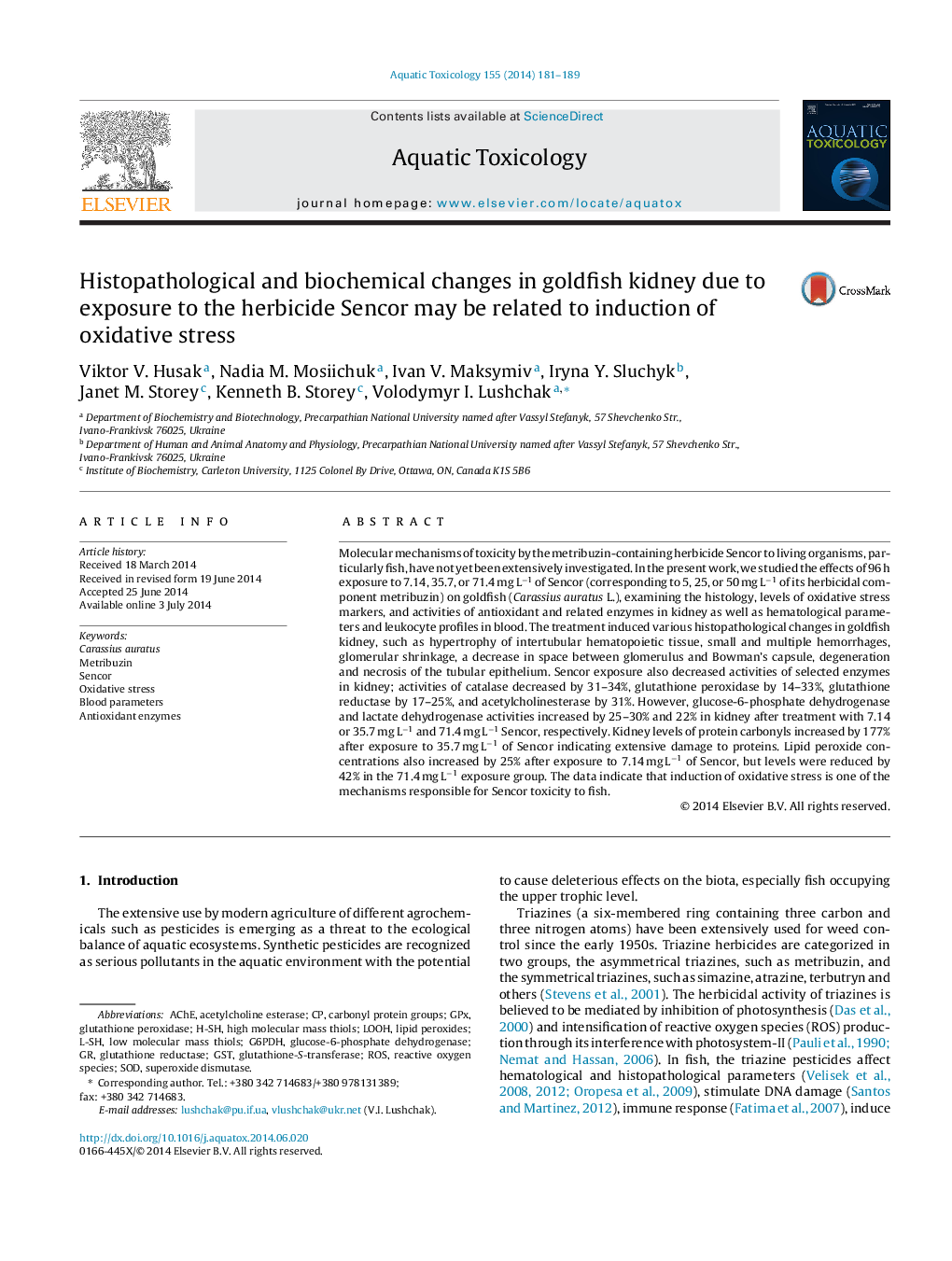| Article ID | Journal | Published Year | Pages | File Type |
|---|---|---|---|---|
| 4529171 | Aquatic Toxicology | 2014 | 9 Pages |
•Impact of 96 h exposure to herbicide Sencor on goldfish kidney was studied.•Sencor treatment induced histopathological changes in goldfish kidney.•Activities of antioxidant enzymes decreased in kidney of Sencor-exposed goldfish.•Oxidative stress may be responsible for Sencor toxicity to goldfish.
Molecular mechanisms of toxicity by the metribuzin-containing herbicide Sencor to living organisms, particularly fish, have not yet been extensively investigated. In the present work, we studied the effects of 96 h exposure to 7.14, 35.7, or 71.4 mg L−1 of Sencor (corresponding to 5, 25, or 50 mg L−1 of its herbicidal component metribuzin) on goldfish (Carassius auratus L.), examining the histology, levels of oxidative stress markers, and activities of antioxidant and related enzymes in kidney as well as hematological parameters and leukocyte profiles in blood. The treatment induced various histopathological changes in goldfish kidney, such as hypertrophy of intertubular hematopoietic tissue, small and multiple hemorrhages, glomerular shrinkage, a decrease in space between glomerulus and Bowman's capsule, degeneration and necrosis of the tubular epithelium. Sencor exposure also decreased activities of selected enzymes in kidney; activities of catalase decreased by 31–34%, glutathione peroxidase by 14–33%, glutathione reductase by 17–25%, and acetylcholinesterase by 31%. However, glucose-6-phosphate dehydrogenase and lactate dehydrogenase activities increased by 25–30% and 22% in kidney after treatment with 7.14 or 35.7 mg L−1 and 71.4 mg L−1 Sencor, respectively. Kidney levels of protein carbonyls increased by 177% after exposure to 35.7 mg L−1 of Sencor indicating extensive damage to proteins. Lipid peroxide concentrations also increased by 25% after exposure to 7.14 mg L−1 of Sencor, but levels were reduced by 42% in the 71.4 mg L−1 exposure group. The data indicate that induction of oxidative stress is one of the mechanisms responsible for Sencor toxicity to fish.
